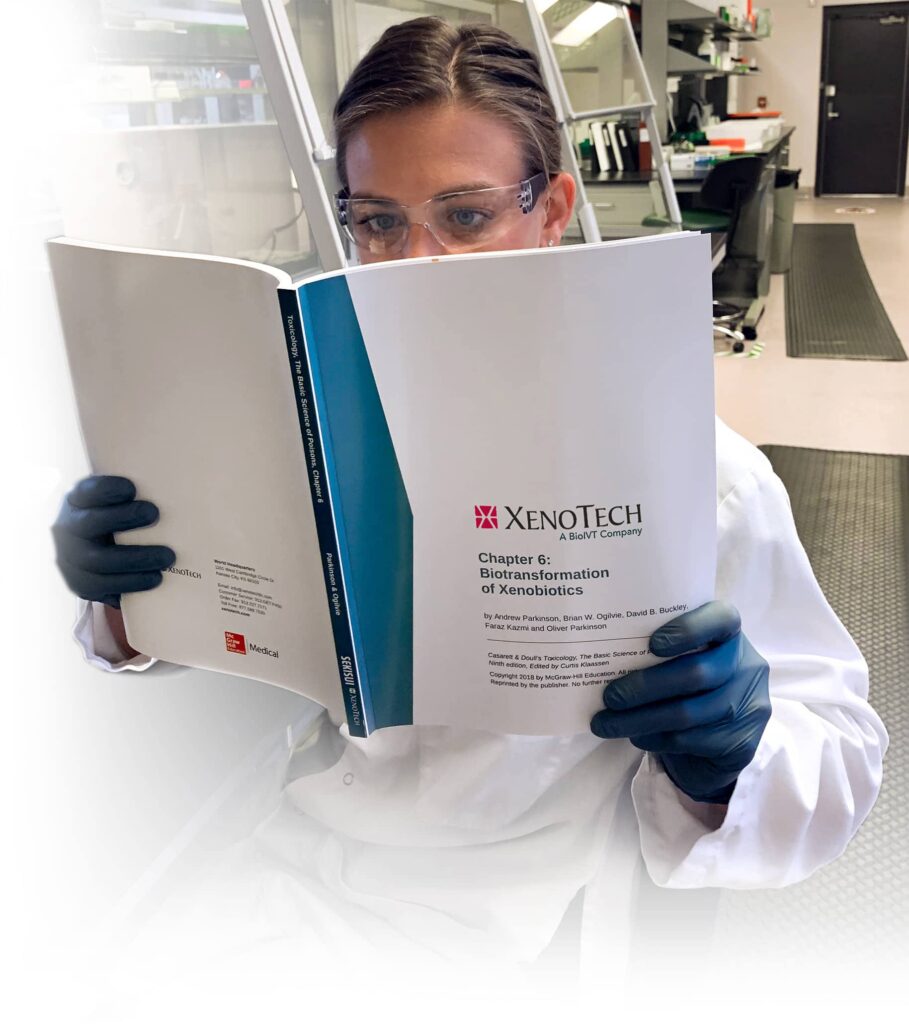
Effects of organ preservation solution on aldehyde oxidase and xanthine oxidase activity in pooled human liver S9
Full Title
Effects of organ preservation solution on aldehyde oxidase and xanthine oxidase activity in pooled human liver S9
Authors
Kevin C. Lyon, Chad Pope, Melissa Ostermann, Maciej Czerwinski and Andrew Parkinson
Abstract
Non-transplant quality human livers donated for research are a common source of both cellular and subcellular material utilized in in vitro drug metabolism studies.
At the time of organ recovery, livers are flushed with an ice-cold perfusion and storage solution that preserves the tissue during delivery from the recovery site to the research facility. The two most commonly used cold storage solutions are UW (University of Wisconsin) solution and Custodiol HTK (histidine tryptophan ketoglutarate) solution. One notable difference between the two solutions is the presence of 1 mM allopurinol in UW solution.
It has been previously shown that1 mM allopurinol inhibits xanthine oxidase activity, but not aldehyde oxidase in human liver cytosol (Barr et al., 2014). Allopurinol exposure to human livers during cold storage could lead to underestimation of the contribution of xanthine oxidase in the metabolism of new chemical entities. Here, we hypothesized that preparing a pool of human liver S9 prepared exclusively from Custodiol HTK-preserved livers will have significantly higher xanthine oxidase activity compared to pools of liver S9 prepared from livers preserved primarily in UW solution. In this study, we compared AO and XO activity in pooled human liver S9 made from 20 donors preserved in HTK with those in two commercially available pools of S9 (n = 50 and 200) produced by XenoTech from livers preserved primarily in UW solution. Xanthine oxidase activity was determined by measuring the oxidation of 6-ntiroquinazolinone to 6-nitroquinazolinedione.
Aldehyde oxidase activity was determined by measuring the oxidation of phthalazine to 1-phthalazinone, p-vanillin to vanillic acid and the zaleplon to 5-oxo-zaleplon.
To determine whether UW and HTK affected other drug metabolizing enzymes, we looked at the metabolism of appropriate marker substrates for the major cytochrome P450 (CYP) enzymes. S9 prepared from HTK-only livers had a 539% and a 264 to 359% higher xanthine oxidase and aldehyde oxidase than S9 prepared from primarily UW donors. Activities of CYP1A2, CYP2B6, CYP2C8, CYP2C9, CYP2C19, CYP2D6, CYP2E1 and CYP3A4 were not statistically different between the HTK and UW pools. These data indicate that a preparation of pooled human liver S9 prepared from tissue that is cold-preserved in HTK solution has increased xanthine oxidase and aldehyde oxidase activity compared to S9 prepared from livers preserved in UW solution.